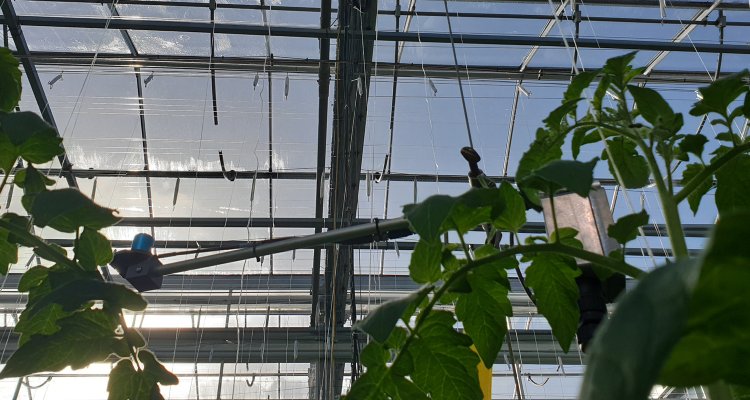
News
WUR investigates transparent and energy-efficient coating
The more light, the higher - potentially - the production of a crop. That is why growers are looking for glass that is as transparent as possible for their greenhouses. However, that glass also ensures that a relatively large amount of heat escapes from the greenhouse: it does not stop enough radiant heat losses. The Business Unit Greenhouse Horticulture and Flower Bulbs of Wageningen University & Research is therefore investigating whether a 'low-emission' coating can provide an optimal combination of light radiation and energy savings.
Glass with a 'low emission' coating from glass manufacturer AGC has a high light transmission and can nevertheless result in energy savings of approximately 20 percent according to the calculations. But the coating also ensures a slightly higher temperature in the greenhouse - especially in the summer - and because the glass becomes warmer for less condensation.
As a result, less dehumidification takes place against the greenhouse roof. To prevent cultivation problems, the greenhouse will therefore have to be ventilated a little more. In other words: more heat and CO2 potentially disappear from the greenhouse during dehumidification. And that can affect production. Due to state-of-the-art dehumidification with latent heat recovery, the demand for dehumidification via the vents will decrease in any case.
So the coating has many advantages, but also some disadvantages. WUR is therefore investigating how these relate to each other in Bleiswijk. To this end, tomato cultivation was started at the end of 2021 in two greenhouse departments (of 144 m2). The reference compartment has single glass with an AR coating on one side, the other compartment (where the treatment takes place) has single glass with a 'low emission' coating. Both compartments have double screens, a dehumidifier with latent heat recovery and are not lit. During the research, researchers look at the effects on climate, moisture, CO2 and energy consumption.
The research into the effects of a low-emission coating on the greenhouse climate, energy consumption and production is financed by the Kas als Energiebron program.